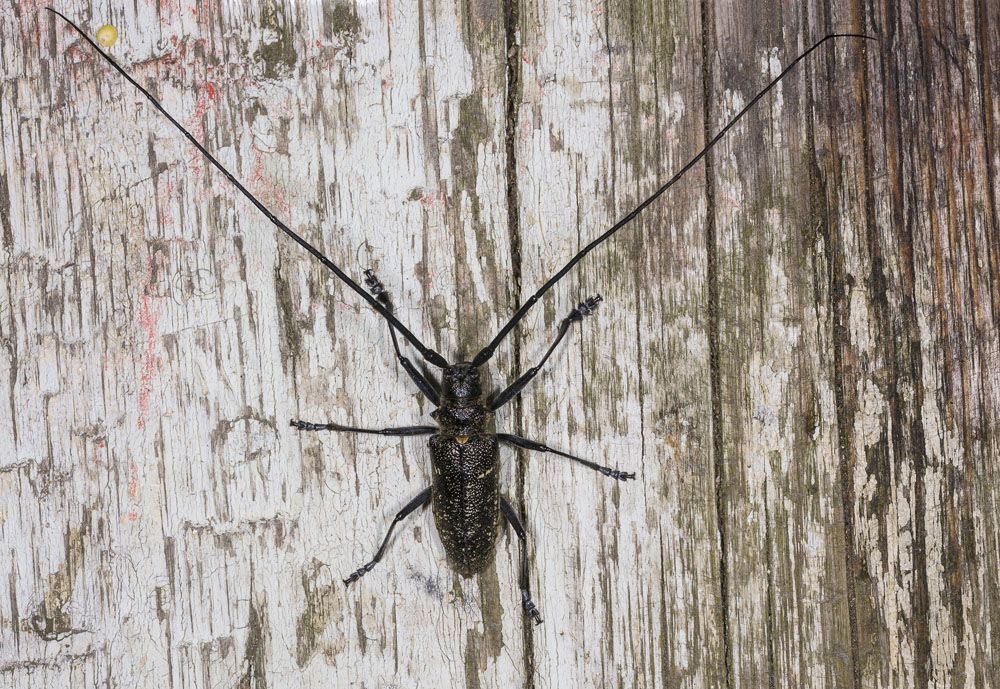
Pine Sawyers – Monochamus spp.
Pine Sawyers (Monochamus spp.)
Latin Name: Monochamus spp.)
Common Name: Pine Sawyers
Appearance:
- Adults are huge beetles (approximately one inch long), black to brownish-grey with white speckling, and have extraordinarily long antennae that are one to three times the length of the body
- Larvae: up to 1 inch long; white grubs without legs
